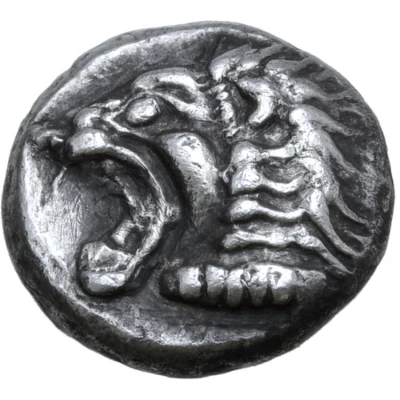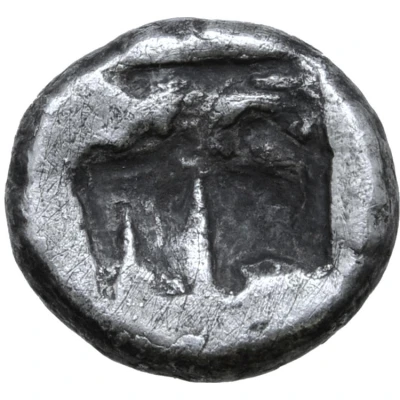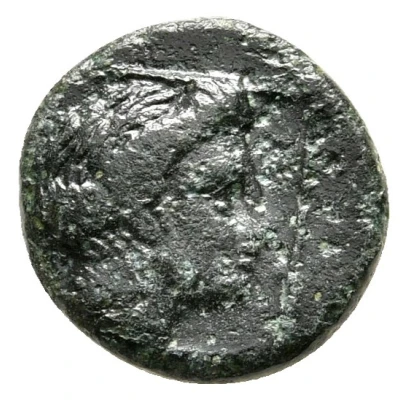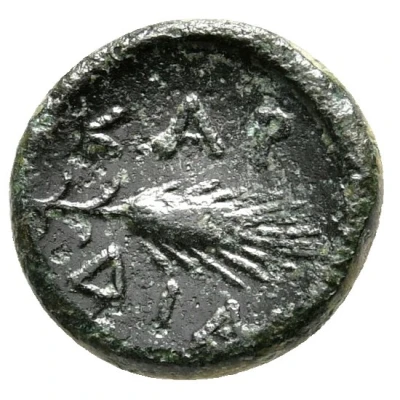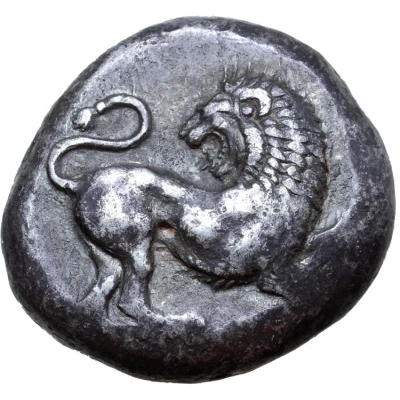
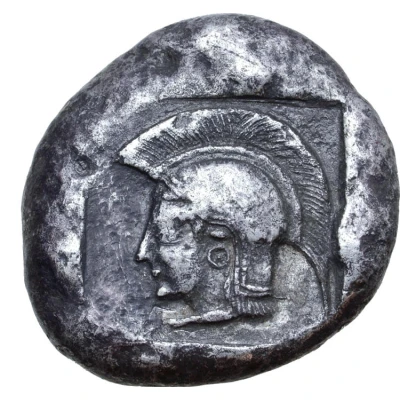

Tetradrachm - Miltiades II 499 BC - 493 BC
| Silver | 15.52 g | 24 mm |
| Issuer | Kardia (Thrace) |
|---|---|
| Type | Standard circulation coin |
| Years | 499 BC - 493 BC |
| Value | Tetradrachm (4) |
| Currency | Drachm |
| Composition | Silver |
| Weight | 15.52 g |
| Diameter | 24 mm |
| Shape | Round (irregular) |
| Technique | Hammered, Incuse |
| Orientation | Variable alignment ↺ |
| Demonetized | Yes |
| Updated | 2024-10-10 |
| Numista | N#199799 |
|---|---|
| Rarity index | 100% |
Reverse
Head of Athena left, wearing crested Attic helmet, pearl necklace and earring; all within incuse square.
Comment
BMC Thrace -; SNG Copenhagen -; Traité pl. 57, 15; Seltman pl. 24, A332/P419; Kraay-Hirmer pl. 140, 432.
This coin is perhaps to be dated to the period of the Ionian Revolt and, although it has no name to identify Militiades, it is believed to have been issued by him for the reasons that it was struck on the Attic rather than Persian standard, and that it prominently features the head of Athena, in common with the contemporary Athenian coinage. It is suggested to have been minted at Kardia on account of the use of the lion - the ancient heraldic symbol of Miletos, both founder of the city of Kardia in the late 7th Century BC and the principal driving force behind the Ionian Revolt.
Interesting fact
One interesting fact about the Tetradrachm - Miltiades II (499 BC - 493 BC) from Kardia (Thrace) is that it features a unique combination of Greek and Persian influences in its design. The coin's obverse side bears the image of a bearded Miltiades II, who was a prominent Athenian statesman and military leader, while the reverse side features an image of the Persian king Darius I, highlighting the complex political and cultural relationships between ancient Greece and Persia during that time.
